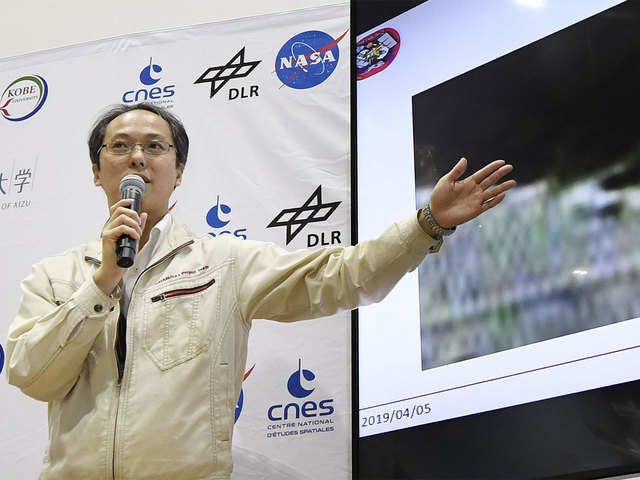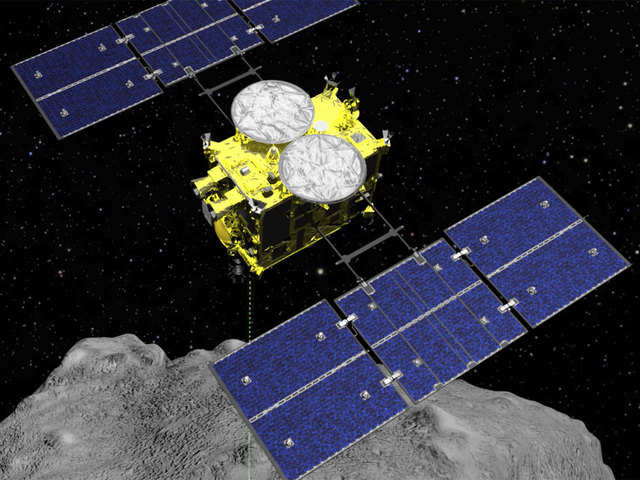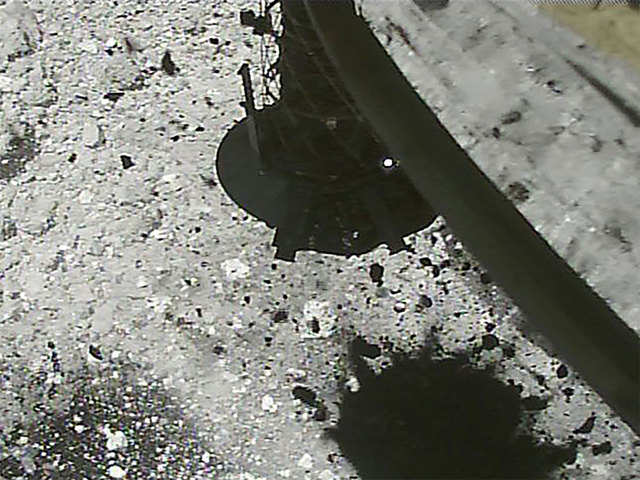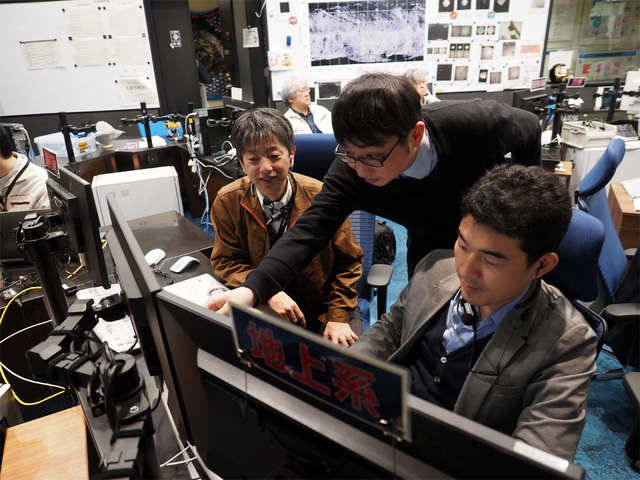Updated: 26 Apr 2019, 02:26 PM IST

1/5
First-ever artificial crater
Japanese scientists have succeeded in creating what they called the first-ever artificial crater on an asteroid, a step towards shedding light on how the solar system evolved, the country's space agency said on Thursday.
The announcement comes after the Hayabusa2 probe fired an explosive device at the Ryugu asteroid early this month to blast a crater in the surface and scoop up material, aiming to reveal more about the origins of life on Earth.
In pic - Project manager Yuichi Tsuda of The Japan Aerospace Exploration Agency
The announcement comes after the Hayabusa2 probe fired an explosive device at the Ryugu asteroid early this month to blast a crater in the surface and scoop up material, aiming to reveal more about the origins of life on Earth.
In pic - Project manager Yuichi Tsuda of The Japan Aerospace Exploration Agency
AP

2/5
Artificial crater
Yuichi Tsuda, Hayabusa2 project manager at the Japanese space agency (JAXA), told reporters they confirmed the crater from images captured by the probe located 1,700 metres (5,500 feet) from the asteroid's surface.
"Creating an artificial crater with an impactor and observing it in detail afterwards is a world-first attempt," Tsuda said. "This is a big success."
In pic - In this computer graphics image released by the Japan Aerospace Exploration Agency (JAXA), the Hayabusa2 spacecraft is seen above on the asteroid Ryugu
"Creating an artificial crater with an impactor and observing it in detail afterwards is a world-first attempt," Tsuda said. "This is a big success."
In pic - In this computer graphics image released by the Japan Aerospace Exploration Agency (JAXA), the Hayabusa2 spacecraft is seen above on the asteroid Ryugu
AP

3/5
Key achievement
NASA's Deep Impact probe succeeded in creating an artificial crater on a comet in 2005, but only for observation purposes.
Masahiko Arakawa, a Kobe University professor involved in the project, said it was "the best day of his life".
"We can see such a big hole a lot more clearly than expected," he said, adding the images showed a crater 10 metres in diameter.
In pic - The handout photo received from the Hayabusa2 spacecraft and made available by the Japan Aerospace Exploration Agency (JAXA) shows stone and sand after bullets were fired into the surface to collect data by the Hayabusa2 spacecraft after landing on the asteroid Ryugu
Masahiko Arakawa, a Kobe University professor involved in the project, said it was "the best day of his life".
"We can see such a big hole a lot more clearly than expected," he said, adding the images showed a crater 10 metres in diameter.
In pic - The handout photo received from the Hayabusa2 spacecraft and made available by the Japan Aerospace Exploration Agency (JAXA) shows stone and sand after bullets were fired into the surface to collect data by the Hayabusa2 spacecraft after landing on the asteroid Ryugu
AFP
4/5
One of the first
Japanese space agency scientists had previously predicted that the crater could be as large as 10 metres in diameter if the surface was sandy, or three metres if rocky.
"The surface is filled with boulders but yet we created a crater this big. This could mean there's a scientific mechanism we don't know or something special about Ryugu's materials," the Professor said.
"The surface is filled with boulders but yet we created a crater this big. This could mean there's a scientific mechanism we don't know or something special about Ryugu's materials," the Professor said.
AFP
5/5
"Dragon Palace"
The aim of blasting the crater on Ryugu is to throw up "fresh" material from under the asteroid's surface that could shed light on the early stages of the solar system.
The asteroid is thought to contain relatively large amounts of organic matter and water from some 4.6 billion years ago when the solar system was born.
Photos of Ryugu which means "Dragon Palace" in Japanese and refers to a castle at the bottom of the ocean in an ancient Japanese tale - show the asteroid has a rough surface full of boulders.
In pic - A handout photograph released by the Japan Aerospace Exploration Agency (JAXA) shows the Small Carry-on Impactor (SCI) after the separation from Hayabusa2 probe
The asteroid is thought to contain relatively large amounts of organic matter and water from some 4.6 billion years ago when the solar system was born.
Photos of Ryugu which means "Dragon Palace" in Japanese and refers to a castle at the bottom of the ocean in an ancient Japanese tale - show the asteroid has a rough surface full of boulders.
In pic - A handout photograph released by the Japan Aerospace Exploration Agency (JAXA) shows the Small Carry-on Impactor (SCI) after the separation from Hayabusa2 probe

No comments:
Post a Comment